The XSR Series Pedigree
Explore the XSR Series model world
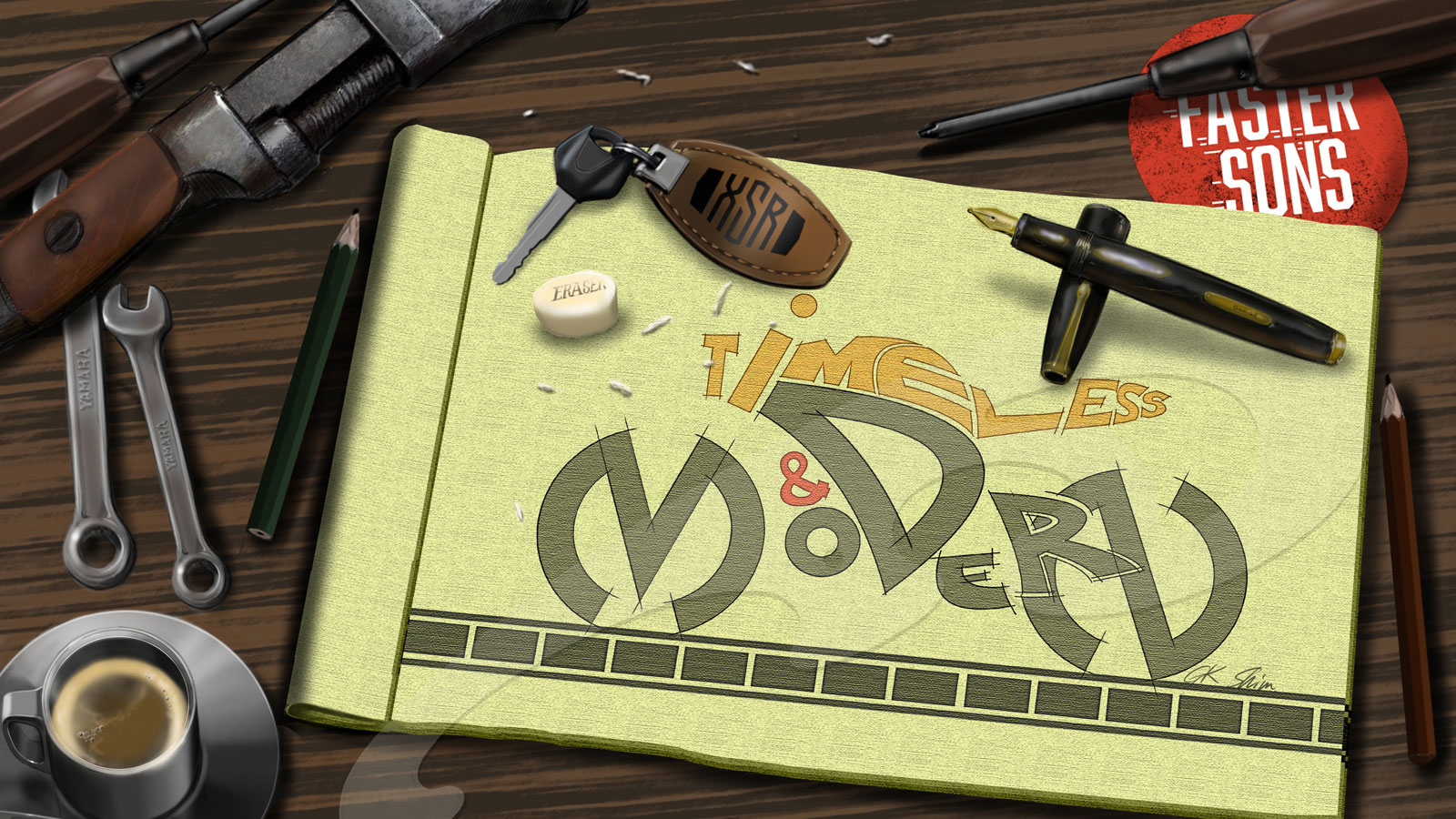
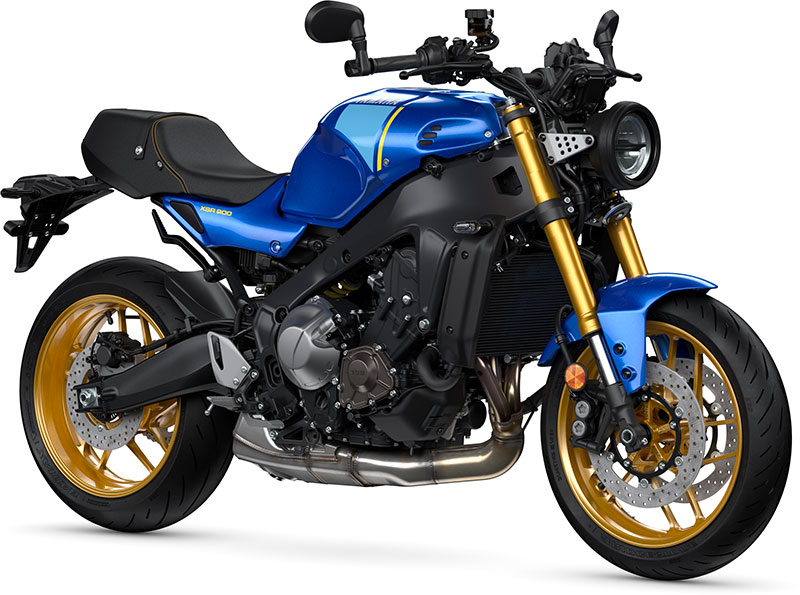
The XSR Series Pedigree
Around 2010, the nascent trend of restoring and customizing classic motorcycles began developing into a global boom in what many would consider the antithesis to that era's radical advances in motorcycle technology and design. It was against this backdrop that Yamaha launched the XSR700 and XSR900 into what was being called the “neo-retro” or “modern classic” category in 2016.
However, the path Yamaha chose was different from that of its rivals; the compass guiding the conceptualization of these new entries was the Japanese proverb of on-ko-chi-shin, meaning to “study the old to better learn the new.” Yamaha would not simply revive standout models from its history, but rather pay due respect to the pioneering steps taken by their creators while generating new value for modern motorcycling.
While models of the MT Series were chosen to serve as platforms, the resulting naked sportbikes had a feel, form, and ride all their own. Beginning with the launch of the XSR700, the XSR Series took shape with the XSR900—which became its flagship—before expanding further with the XSR155 and XSR125. Now loved and recognized by riders around the world, the XSR Series stands tall and full of promise in the category.
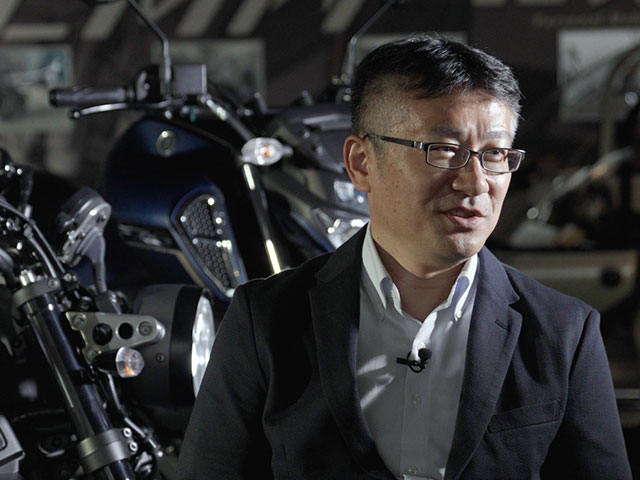
Yoshiaki Yamamoto
1st Generation XSR900 Project Leader

Yasutaka Yoshida
1st Generation CP3 Engine Project Chief
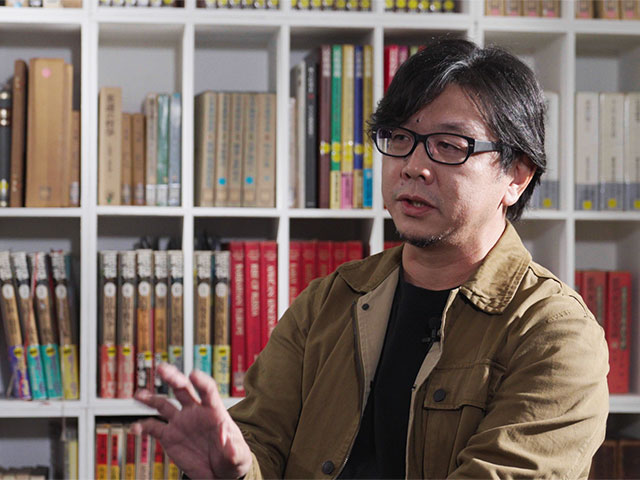
Yoshiro Shimizu
GK Dynamics Product Designer
Beginnings: A New Interpretation of the Neo-Retro Movement
In Europe, the United States, and Japan around 2010, it was becoming more and more common to see enthusiasts finding, restoring, and customizing classic motorcycles. The culture around restoring these motorcycles to bring them back to ride the road once more had itself been around for quite some time already. But with time, a new movement began to emerge in which owners would treat these motorcycles of yesteryear more as a canvas on which to bestow their own new interpretations, broadening the genre to include customized café racers, choppers, bobbers, and others.

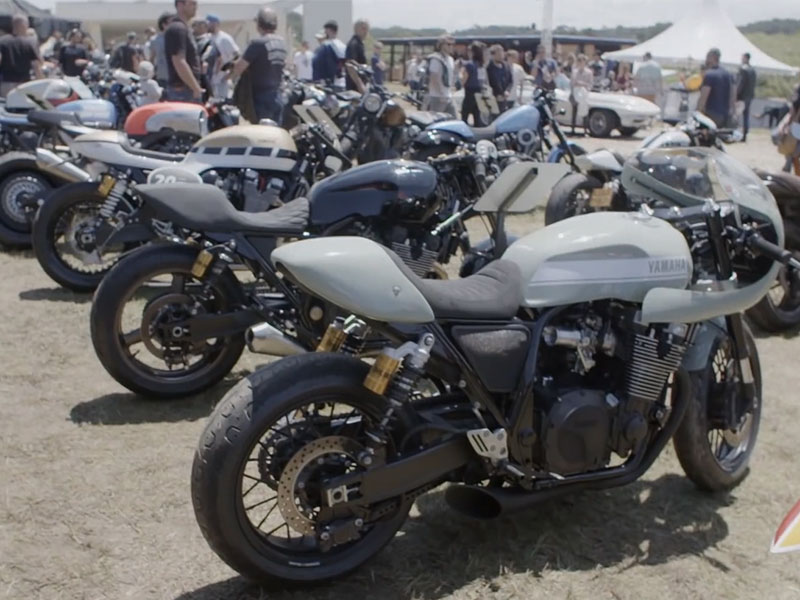
Why are people naturally drawn to classic and vintage motorcycles? Yamaha believed the answer lies in how such motorcycles offer riders the freedom to do whatever they choose with them, and that it is time to once again create a vehicle truly close to people.
This was what spurred the development team to take up the challenge of creating Yamaha's own neo-retro-styled naked, but from the outset, the idea was not one of revival, i.e., to simply throw a modern engine into a body styled to resemble a bike from Yamaha's past. The chassis and engine combination is what determines a motorcycle's ride and performance, and the team was committed to creating a naked that would behave like a state-of-the-art machine even with a classical appearance. But more than anything else, it had to be authentic in its execution so that it would be properly appreciated and loved as a motorcycle on its own.
The MT Series—which was then still under development—was the project that caught the development team's eyes, with the MT-07 mounting an all-new CP2 engine in a tubular steel backbone frame, and the MT-09 featuring the groundbreaking CP3 engine mounted in a CF die-cast aluminum frame. These were Yamaha's newest platforms, set to offer not only a lightweight, slim, compact chassis but also an exciting, torque-driven riding experience. The two engines were developed based on Yamaha's Crossplane Concept in order to provide a character different from the typical sportbike engine of the time, which made high-revving horsepower the main selling point.

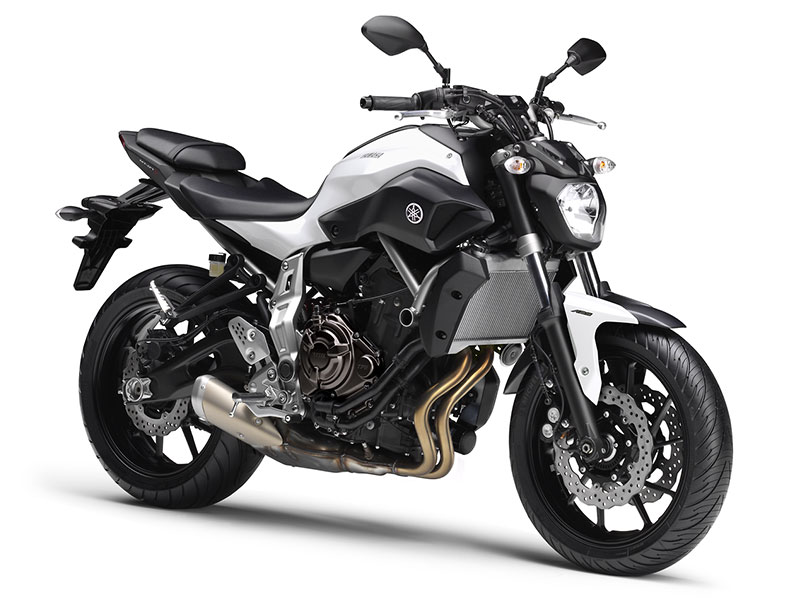
The real issue to tackle with this new neo-retro model was its handling and exterior form. For inspiration, the development team dug deeper into the neo-retro concept and understood that what they sought did not fall under the “vintage” nor “classic” labels—it was “heritage.” Carefully studying the forms and contours of historical Yamaha racers and production models, they asked themselves why each was shaped the way it was and searched for answers.
It eventually became clear that, from the exterior bodywork to the various components, these older models were packed with their developers' creative touches and ingenuity. Models that they scrutinized included Yamaha's first 4-stroke naked sportbike, the XS-1; the RZ250 and 350, which lived up to their reputation as road-going racebikes; the SR400 and 500, whose simplicity made them fixtures of the lineup for 50 years; the SRX400 and 600 that went against the grain of the replica racer boom in its heyday; or the mighty Vmax that occupied a truly unique spot among motorcycles in general. Common to all these models was the fact that their forms clearly illustrated their functionality and performance.
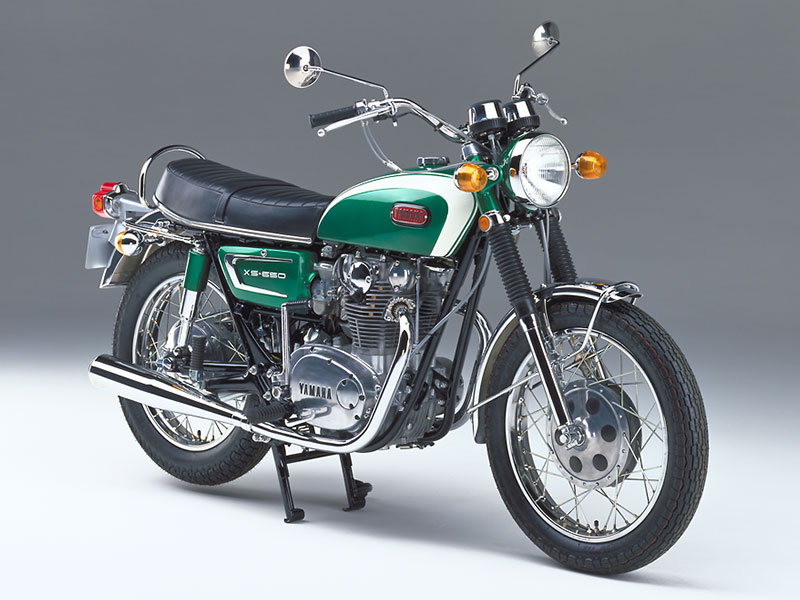
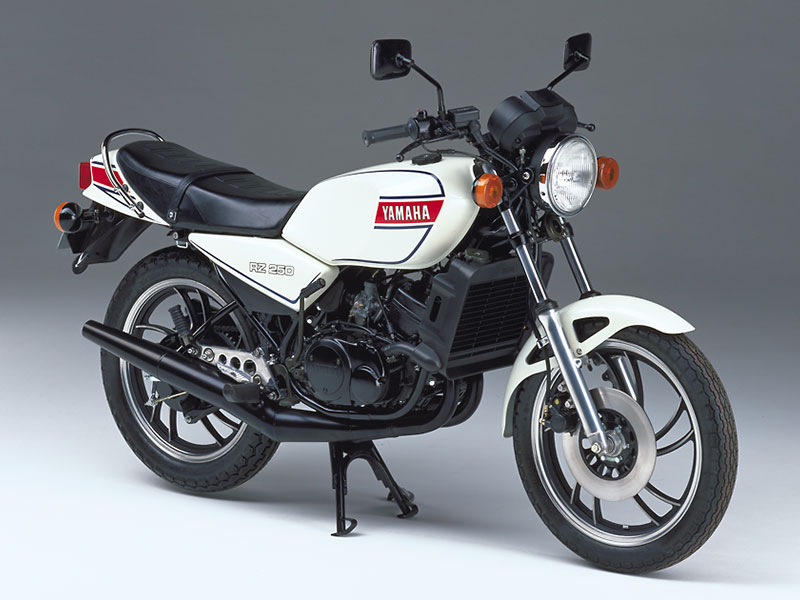
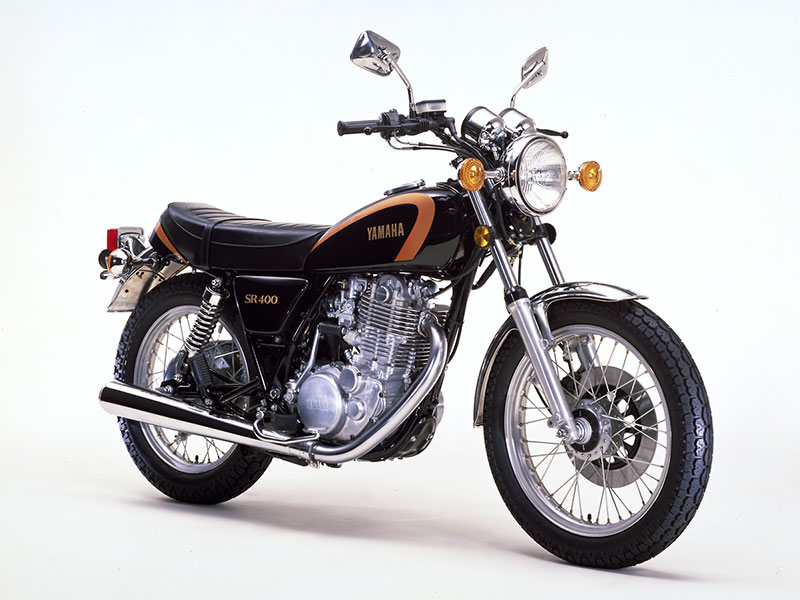
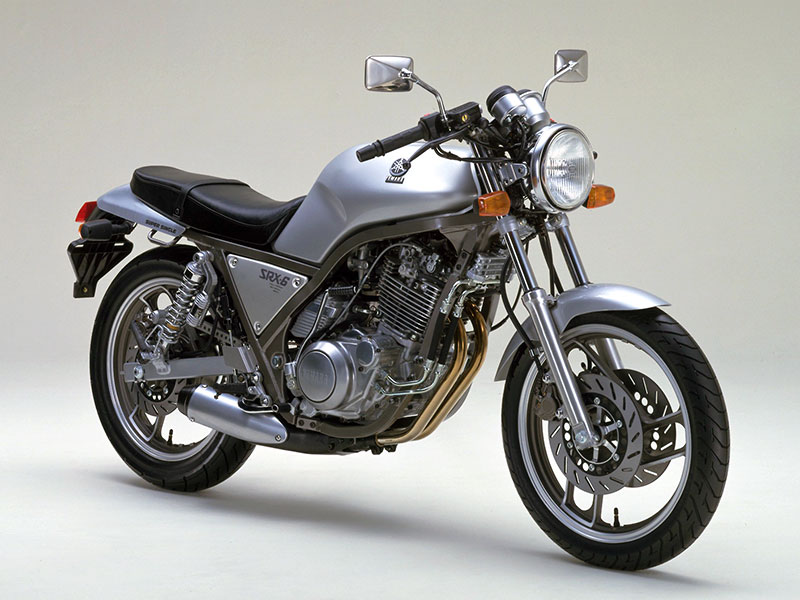
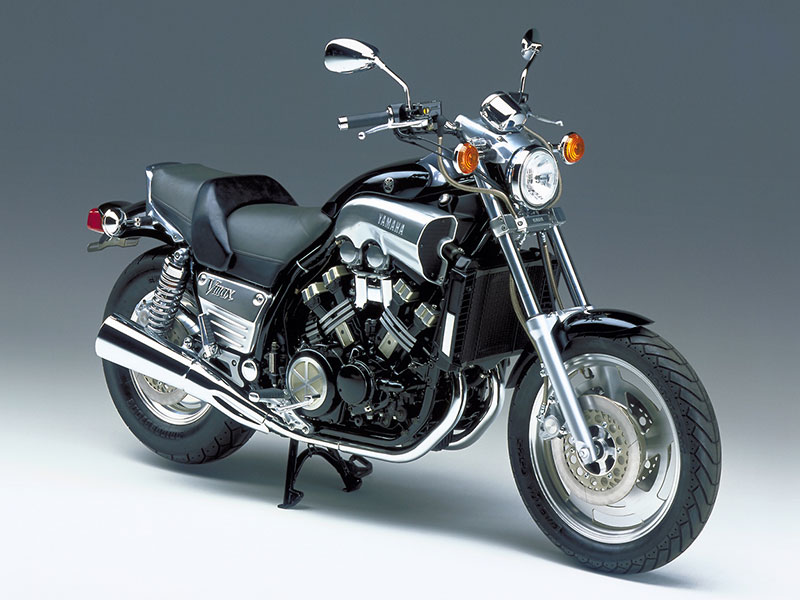
The ride itself comes first and foremost, and since the frame is key to a motorcycle's handling, it had to come from the new MT Series. This resulted in a clear break from the quintessential teardrop fuel tank seen on many vintage and retro models.
What exactly does “heritage” mean in this case? One model that provided a hint was the SR. It's simple in design and hides nothing, and this fact won it the lasting adoration of riders even 50 years after its launch. This realization actually freed the development team from the shackles of words like “retro,” “classic,” or “vintage.” In examining the racebikes in particular, they could see that not only were there no superfluous elements to their forms but the finish was also somewhat rough and rugged, with the aluminum parts left exposed and holes drilled into places to reduce weight. These are some details and design touches the team would later incorporate into the XSR Series. The round speedometer on the first XSR700 and 900 was also reminiscent of Yamaha racing machines of the past like the TDs and YZRs.


In summary, the design of the new XSR line was not an overnight affair but rather an in-depth study into the development of both experimental and production models. This first bore fruit with the XJR1300 Racer released for Europe in 2015 as a “Sport Heritage” model, particularly with the styling emphasizing horizontal lines, the deep knee pockets in the fuel tank, the shape of the seat, the side covers, headlight fairing, and various stays. This redesign of the XJR1300 within the heritage context gave the development team a real feel for executing the on-ko-chi-shin concept to completion.

Progression: Seeking to Uncover Our Heritage
The first two models in the XSR Series were released in rapid succession, with the XSR700 in 2016 quickly followed by the XSR900 in 2017. The XSR700 was based on the MT-07 and employs its incredibly lightweight, slim, and compact tubular steel backbone frame and 689cc CP2 engine with a 270° crank for an uneven firing order. However, the character of the handling was changed from the MT-07's motard-inspired agility. This was done by slightly lengthening the fuel tank and altering the rider triangle—positions of the handlebars, footpegs, and seat—for a slightly forward lean and a sitting position a little further back to produce handling more reminiscent of naked sportbikes from the past. With the CP2 engine's uneven firing order making the rear tire feel like it's sinking its teeth into the road, this combination gives the XSR700 a fun-to-ride bent different from the MT-07.
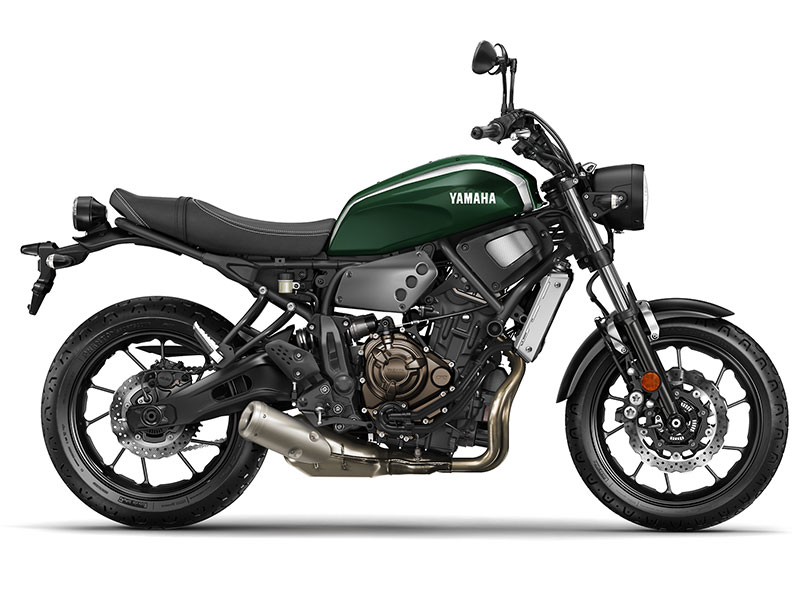
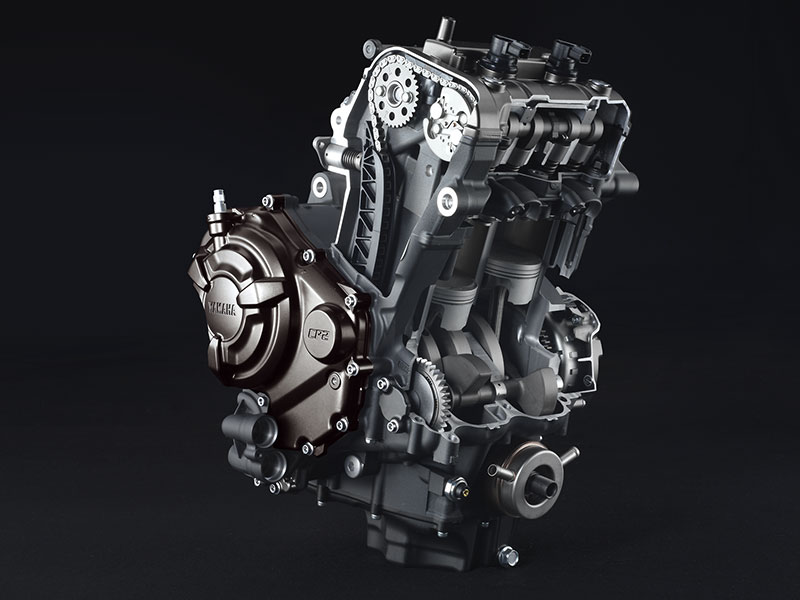
Meanwhile, the bigger XSR900 released afterwards was based on the MT-09 platform of the time, namely a lightweight, high-rigidity CF die-cast aluminum frame and the 847cc CP3 engine. Like its XSR700 sibling, the 900 was arranged to be more of a conventional naked instead of the agile motard style of the MT Series. The powerplant, however, retained the MT-09's exhilarating performance. Vibes and aura are paramount in the neo-retro category, so the development team could have given it a milder performance to fit. But they reasoned that the XSR900 was a café racer, so while it should have a nostalgic look and feel to a certain extent, the ride should provide punchy torque just about everywhere for sporty performance that sets it apart from the MT-09.
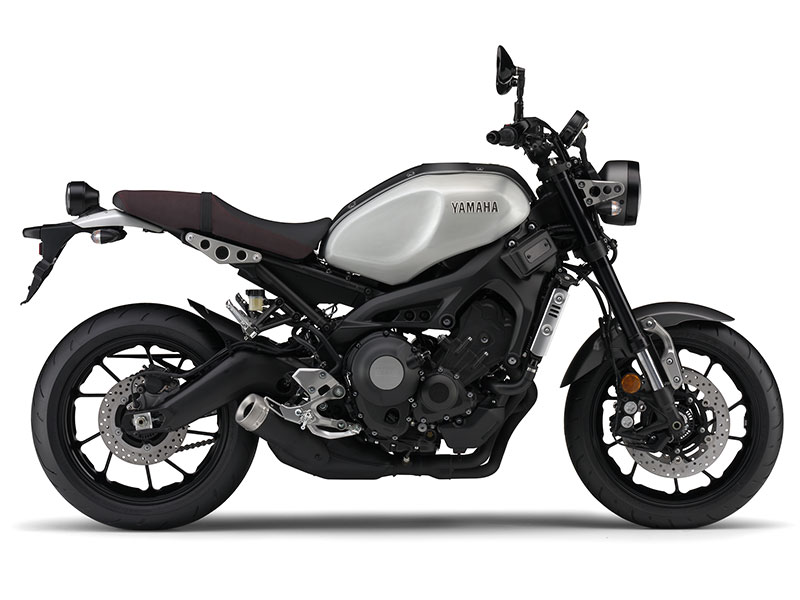
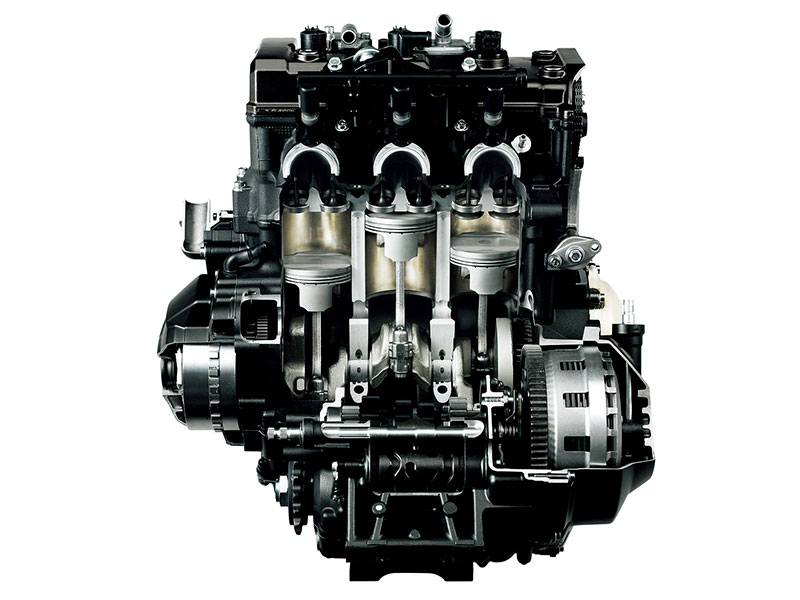
Since their respective debuts, both the XSR700 and 900 have undergone minor changes, including adopting color schemes on the fuel tank reminiscent of Yamaha's heritage, like the iconic yellow and black of Kenny Roberts' YZRs or the red, black, and gold of the RZs. But it was in 2020 that the XSR900 received its first full redesign.
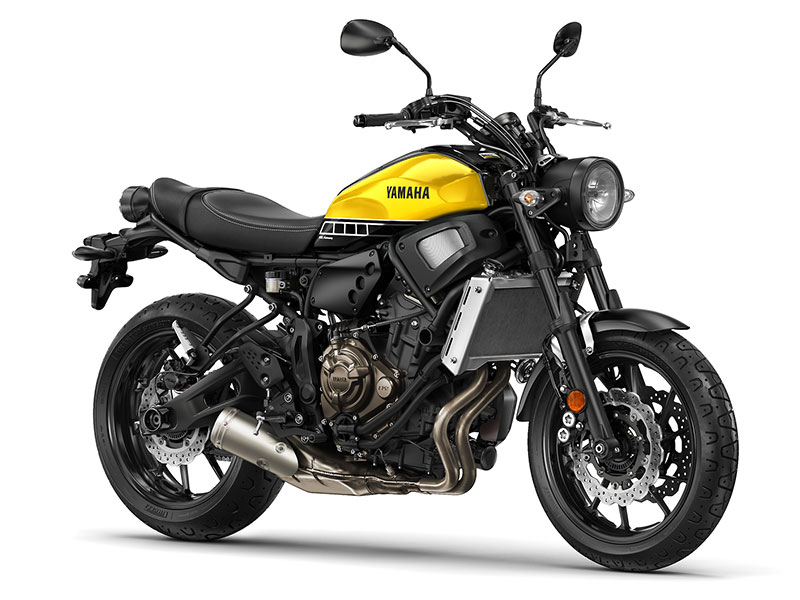


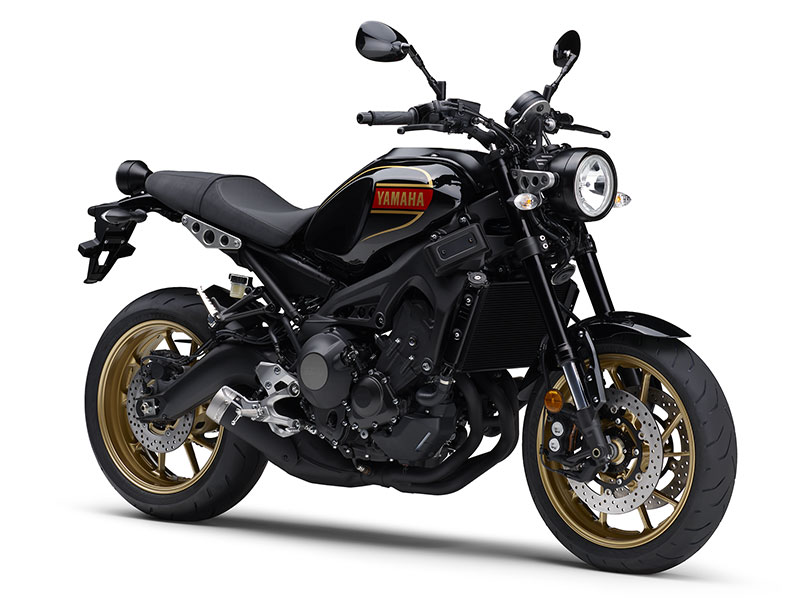
The XSR Series itself grew again in 2019 with the MT-15-based XSR155 debuting in Thailand and Indonesia, and then with the MT-125-based XSR125 hitting Europe's streets in 2022. Both use MT Series platforms, but these are in turn based on R-Series models, meaning they inherit that same sporty handling DNA. The engines for both also feature Variable Valve Actuation (VVA) for powerful torque from low to high rpm despite their small engine displacements.
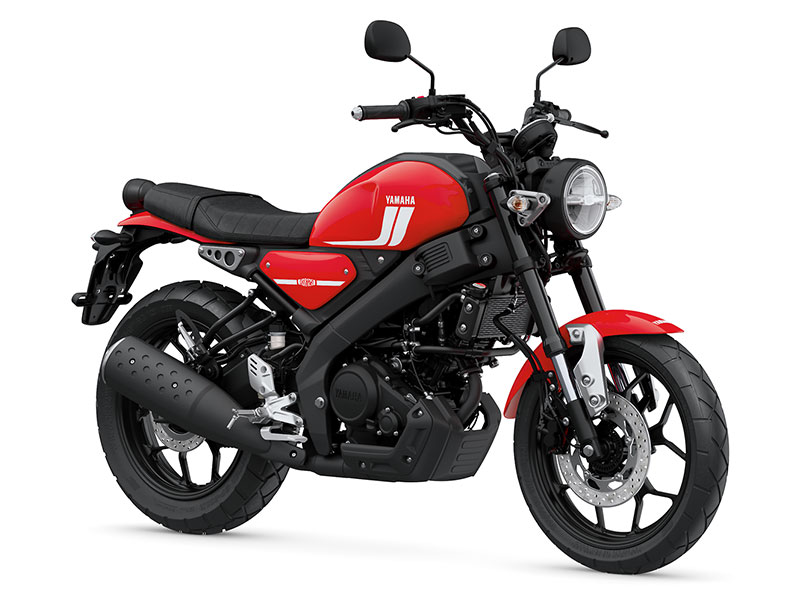
Today: Still Discovering Our Heritage
As part of a full model update for 2020, the new XSR900 is now based on the fully redesigned MT-09 platform. The deeper search into Yamaha's heritage was reflected with a new kind of performance and exterior design that makes it no exaggeration to call this new model something completely different. The neo-retro category at present is so crowded with offerings that separating the awesome from the adequate becomes a trial, but the new XSR900 was developed not so much to stand out from the crowd as it was a project to further explore Yamaha's “Faster Sons” concept direction.
Before any design sketches or engineering blueprints had even been drawn up, the product planning, engine, chassis, track testing, and design teams all left their respective workplaces to get together and pin down what exactly the new XSR900 should be. A defining example of their early work was the assiduous examination of Yamaha's historical racebikes.
In the southwestern Toyooka district of Yamaha Motor's hometown of Iwata in Japan sits a warehouse with a special role—this is where iconic racebikes from Yamaha's past are stored as well as kept in running condition. The staff charged with the task are some of Yamaha's best bike mechanics, with most having wrenched on old Grand Prix machines in their careers. The entire XSR900 development team went to this warehouse and swung their legs over dozens of racebikes, closely scrutinizing every nook and cranny. It was almost like trying to step into the past to pick up the words the riders, development engineers, and mechanics likely exchanged back then. One striking realization the team had in its study was the short stretch to the ground for the rider's feet with these motorcycles. This, of course, helped make these old machines easier to push-start at races, but an oft-overlooked aspect is how stylish it makes the rider look while astride the bike. It was actually a test rider that made this discovery and subsequently suggested the team incorporate it into the new XSR900.
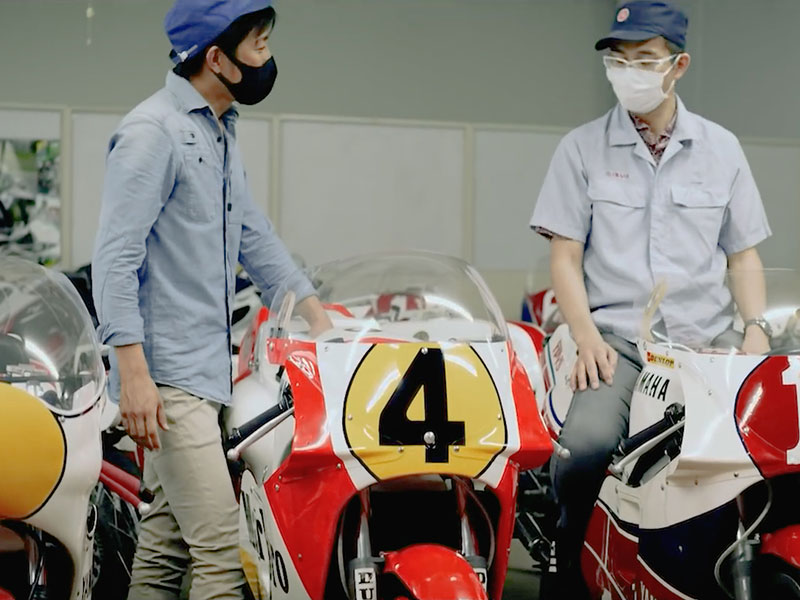
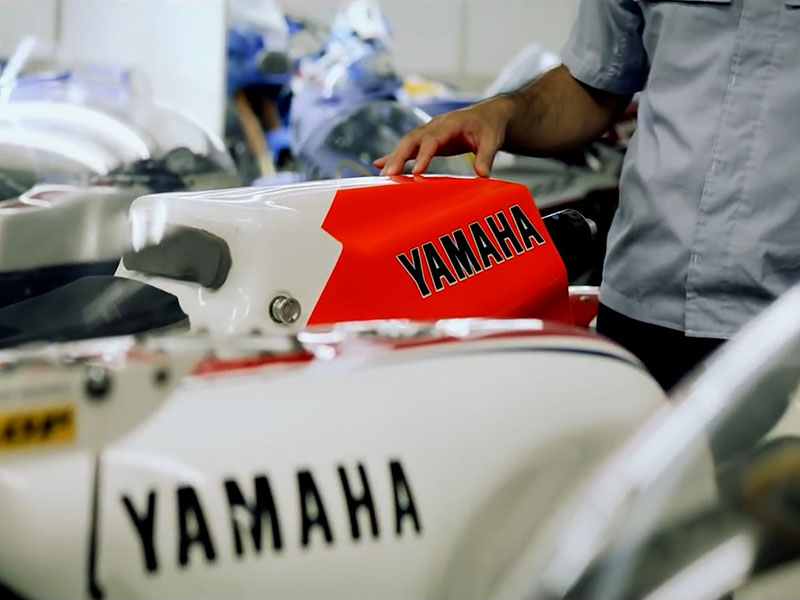
It was when the development team went to Europe on an XSR market research trip that they saw riders sitting on their stopped bikes with both feet firmly on the ground and using a smartphone. In recent years, most nakeds have begun emphasizing performance and this inevitably affects foot reach to the ground, forcing many riders to be on their tiptoes when stopped. The test rider felt that this just wouldn't be a good look for the XSR. Looking at old racing photos, the racers themselves would clearly have both heels of their feet planted on the ground, regardless of differences in machine size and rider physique.
This led to the decision to implement that same ease of foot reach to the ground as an element of Yamaha's heritage, but this in effect meant changing the mounting position and angle of the subframe. In other words, the team was going to take the MT-09 frame and customize it specifically for the new XSR900. But before getting to any design sketches, the team tried something different; they wanted to get straight to work before the feel and lessons learned from sitting on so many racing machines faded from their minds and bodies, so they elected to do a “3D sketch.”

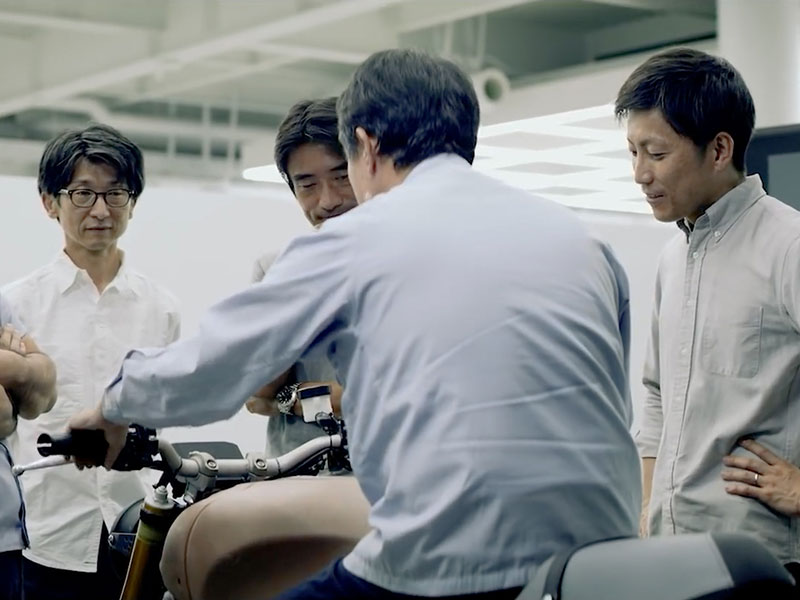
They brought in a 3D mockup of the previous MT-09 to use as a base, stripped it down, then placed blocks of Styrofoam on it and began to carve away at them. The seat height, seating position, footpeg position, reach to the handlebars, curvature of the knee pockets in the fuel tank, and more were all worked out as everyone on the team took turns sitting on the mockup, cutting and shaving away the Styrofoam where needed. The result of that is the form of the new XSR900. It's not unusual for ideas related to the bike's exterior design to emerge from Yamaha engineers like this; the idea to house the bike's taillight under the rear end of the seat, for example, came from a chassis engineer.
The powerplant for the latest XSR900 was lifted directly from the new MT-09, which received a larger displacement and a redesigned cylinder head to produce more torque. This opened up more grunt in the rev range up to the 7,000 rpm mark commonly used on the road. The MT-09's carefully crafted intake and exhaust sounds were also retained. The combination of intake ducts with differing pipe lengths and a specially designed air cleaner box delivers the induction roar to the rider, which when paired with the unique exhaust system design, provides an exhilarating soundtrack for the bike that still meets noise regulations. This is another major element of the XSR's heritage.
The chassis is also based on the MT-09's frame, but newly designed for easier reach to the ground for the feet and to produce handling befitting the new XSR900. The subframe supporting the seat was designed specifically for the XSR and adopting the longer swingarm from the Tracer 900 results in a 50 mm longer wheelbase compared to the outgoing model. This setup adds to the straight-line stability of the new bike while the various tuning touches create a ride reminiscent of the racebikes of the ‘80s, where the rider sits practically on top of the rear wheel and corners by quickly changing lines at the apex to shoot out the turn. This differs from the MT-09's agile, motard-like ride that almost dances through the twisties and on city streets. For younger generations of riders less familiar with the past, this character allows them to discover the unique feeling of unity with the machine that comes from “communicating” with the bike through the rear wheel.
In creating the XSR900's exterior design, the team's examination of numerous Yamaha racing machines from different eras at the Toyooka warehouse allowed them to also delve into the technical background of each. Doing this illuminated that the watershed year for racing machine chassis and bodywork was around 1983. Following its introduction on Kenny Roberts' YZR500 (0W70) for the 1983 season, Yamaha racebikes have used the aluminum Deltabox frame, which not only greatly increases the rigidity of the chassis but also gives it a downforce-oriented form, something that continues even today.
Prior to 1983, Yamaha's racing machines were more horizontally oriented, had long fuel tanks, and the seats were positioned rearward to load the rear wheel, thus creating a riding position in which the racer clutched onto the machine with their arms and legs. However, Yamaha racebikes after ‘83 were designed to make the lines connecting the head pipe and the swingarm pivot as straight as possible to increase chassis rigidity, meaning that a teardrop fuel tank was not a realistic design. The resulting form of these machines dictated by pure necessity in the pursuit of speed and victory represent the footsteps of their creators, and hints of such legacies can be found throughout the new XSR900.
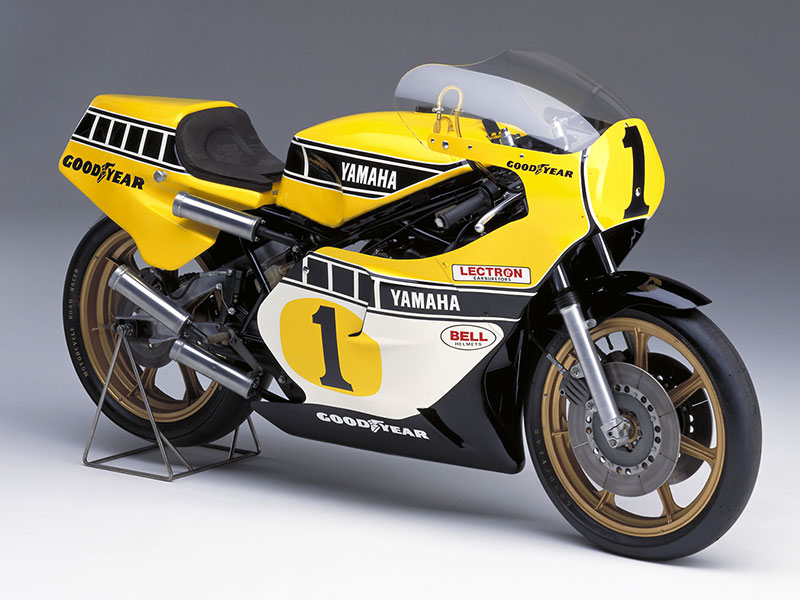
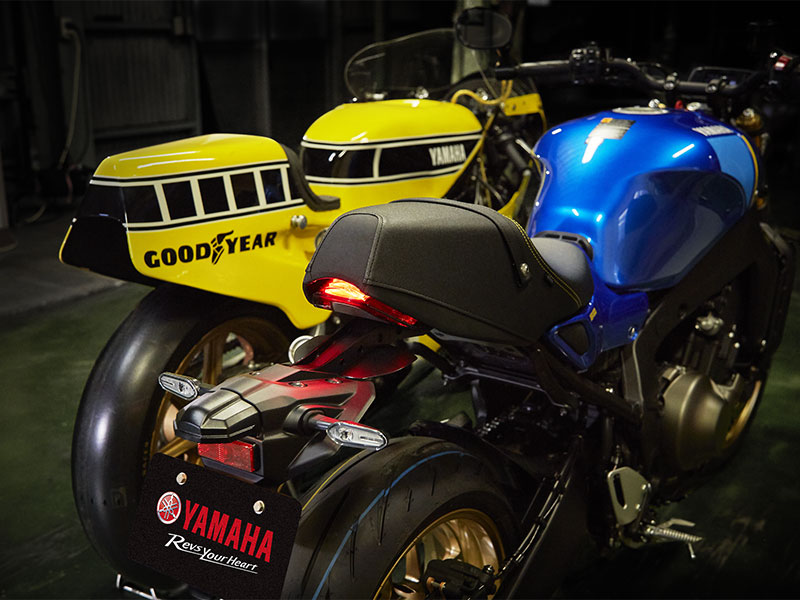
One example is the small gap between the fuel tank and the seat. While studying old racebikes, it was noted that the fuel tank and seat do not form a single integrated shape. To find out why, the team asked a mechanic at the warehouse who was there at the time, who revealed that it was simply because there was no need to integrate the two, so the fuel tank and seat were placed in their respective ideal positions. The new XSR900 takes a cue from this particular detail, utilizing the gap between the fuel tank and the seat as the bridge connecting the left and right side covers. This is but only one example, however. Other elements of the bike's racebike heritage can be picked up throughout, such as the holes drilled into the headlight stays, the quality machining of the washers and bolts in the rider's view while in the saddle, and the first bar-end mirrors on a Yamaha. These additions and small touches don't make the XSR900 any faster, but the level of detail, fit, and finish while calling on our racing history is how we believe the bike opens the throttle in a rider's mind before they even hop on or turn the key.
Commitment: Toward the Future
“Faster Sons” has become the banner of the XSR Series' development. Yamaha Motor's history as a company runs parallel to our history in racing, with the deep-rooted desire to go faster than everyone else not only improving our motorcycles but also driving us to take on new challenges toward a yet unseen future. Faster Sons is about the spirit of the pioneers who brought groundbreaking Yamaha motorcycles into the world and those who follow in their footsteps to carry on that spirit.
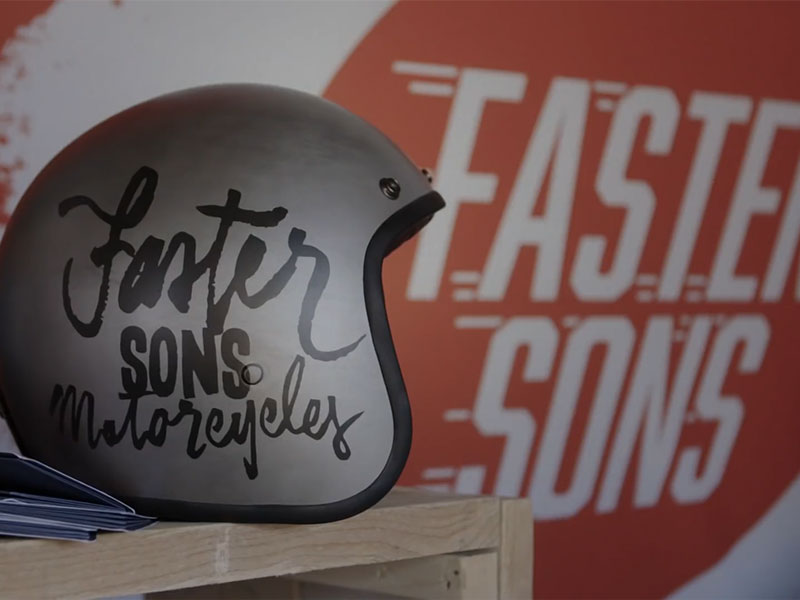

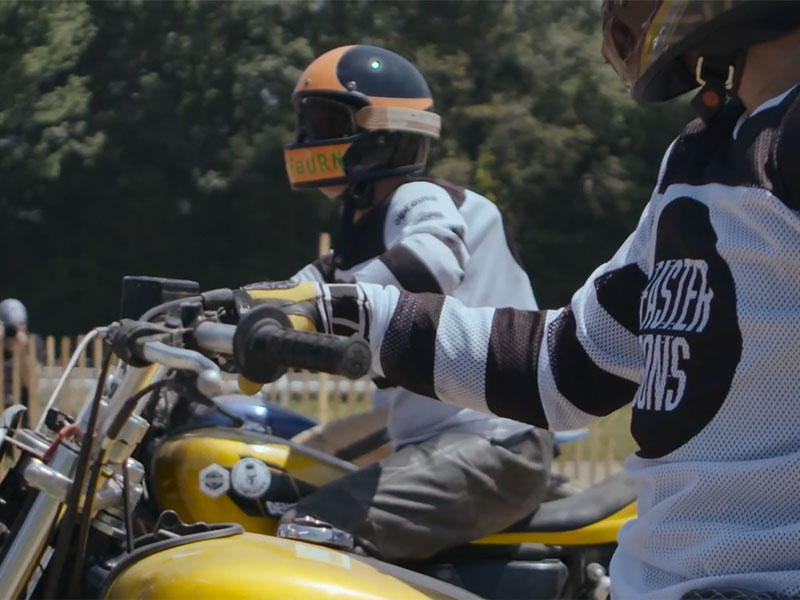
At the heart of this is the firm will to continue communicating the timeless appeal of motorcycling in the midst of the rapidly diversifying lifestyles we see today. This does not mean creating machines meant for universal acceptance, nor does it mean imposing self-righteous values onto motorcyclists. Rather, the goal is to keep a trained finger on the pulse of the times, adapt without hesitation, and offer value many riders can and will identify with.
An example of this is one of the items among the new XSR900's development requirements: to design the specs to be ready to accommodate future developments and user-based customization, but with subtlety. Also, the introduction of the XSR155 and 125 should convey the sense that there are still new possibilities to explore. As we “redesign” the way people enjoy and interact with motorcycles, we can offer more freedom and fun to riders everywhere.
The road forward will be paved by Yamaha and riders together, and the future belongs to a new kind of relationship between people and motorcycles.
Products
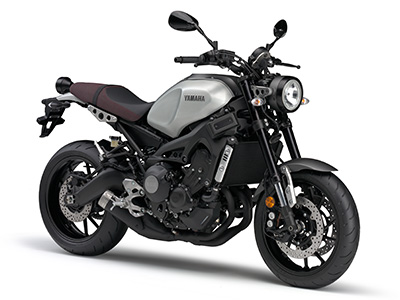
- XSR900
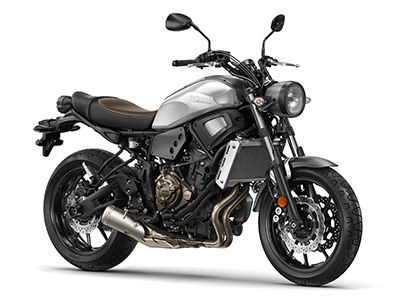
- XSR700

- XSR155

- XSR125